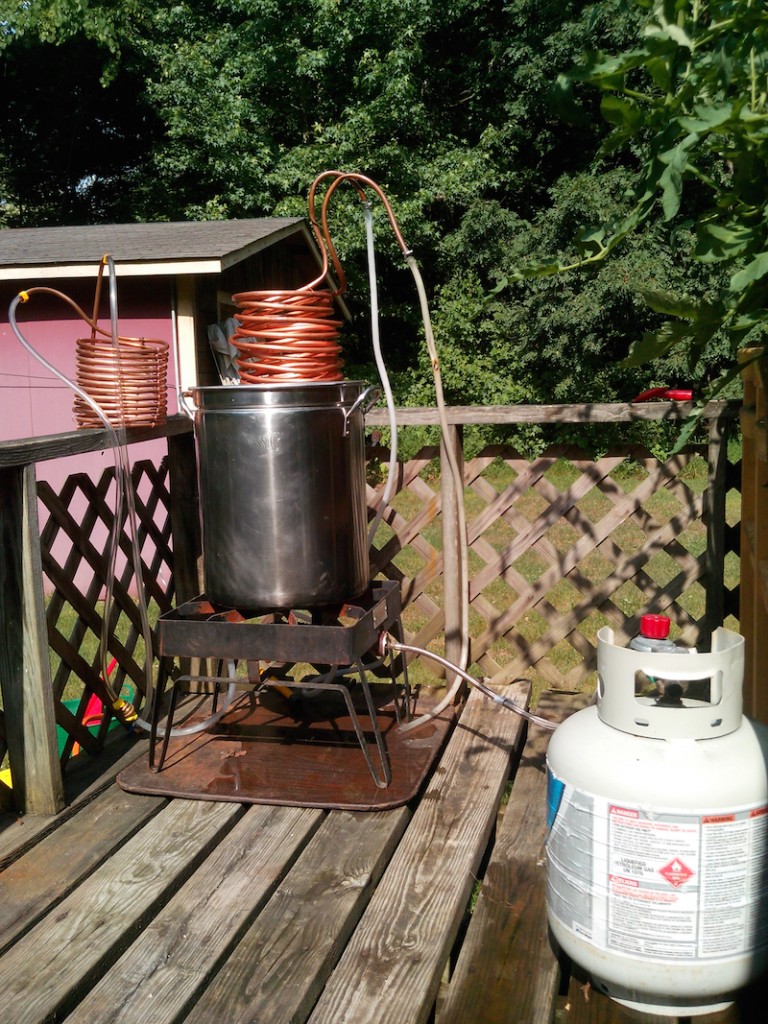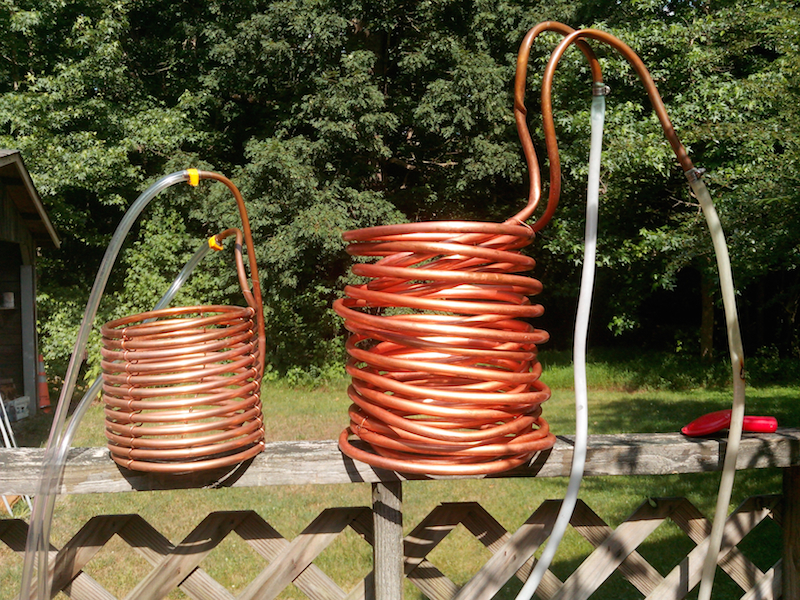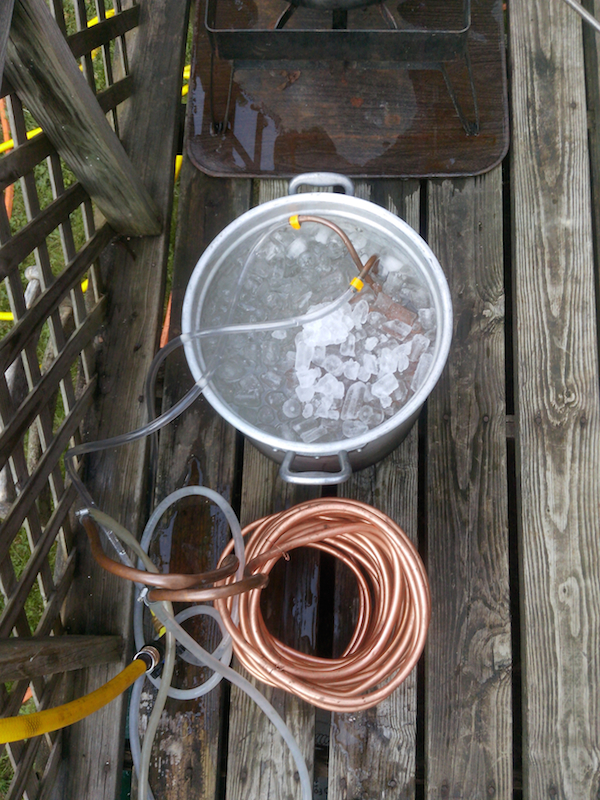
Brewing during the summer presents a unique set of issues for home brewing enthusiasts, especially those in the southeastern United States. The ambient temperatures are conducive to only a select few yeast strains, high humidity plays with your boil off rate, and ground water temperatures make chilling your batch a huge pain. So, with summer upon us, get ready to crank the AC, play the guesstimation game, and pull out the ol’ wort chiller. Whether you’re working with a classic immersion chiller, a fancy counter-flow, or the super specialized plate chiller, it’s important to pull out all the stops in order to bring your wort from boiling to fermentation temps.
One tool that proves invaluable when it comes to cutting down chilling times and increasing efficacy is the wort pre-chiller. A wort pre-chiller is, usually, a copper coil that is utilized in conjunction with your usual wort chiller. The idea is to use the wort pre-chiller in-line above your wort chiller and place it in a volume of liquid/ice that is as cold as possible. Once you begin running water through the pre-chiller it will be cooled to the temperature of the ice water, thus improving the efficacy of your wort chiller. However, I was curious as to how effective this was and decided to put it to the test.
Let the great experiment begin!
Experiment
So, I designed a very simple experiment in which I could evaluate the effectiveness of using a pre-chiller with my immersion chiller. The goal of the experiment was to determine whether or not using a pre-chiller in conjunction with my immersion chiller was more effective than using my immersion chiller alone.

Constants
- 5 gal of boiling water
- 72.6˚ F groundwater temp
Chillers Used
- 1 x 60’ copper Immersion Chiller (3/8” ID)
- 1 x 25’ copper Immersion Pre-Chiller (5/16” ID)
Setup |
Chill Rate |
|---|---|
Pre-Chill
|
Pre-Chill
|
No Pre-Chill
|
No Pre-Chill
|
So, after everything was said and done, it looks like using a pre-chiller in conjunction with a wort chiller had a demonstrative effect on reducing the temperature of the wort. It appears as though this effect is exaggerated over time and that using a wort chiller alone is just as efficacious in the first few minutes as using a pre-chiller. This is no doubt due to the fact that the temperature differential between the boiling wort and groundwater is so great, regardless of whether the groundwater has been further chilled or not.
In conclusion, using a wort pre-chiller, in addition to your usual wort chiller, can noticeably improve the effectiveness of your process. I would also go so far as to assume that this effect is further exaggerated with larger volumes of wort and, ergo, using a pre-chiller for 10-gallon batches could prove even more advantageous. So, if you’re not using a pre-chiller then consider picking one up today! They’re great for reducing chill times for every batch, reducing the final chill temperature, and they make great chillers for yeast starters!



chris says
Something is wrong with these measurements. I would recheck either your thermometer or the measured temperature of the groundwater during the trial.
It is not possible that you cooled the wort to lower (67*F) temperaure than your cooling water temperature (72.6*F) during the No Pre-chill Trial .
Venu T. says
In addition to the above comment, there is also the issue of how well the ground water is chilled inside the pre-chiller.
Assuming the ice/water mixture is close to 35degrees inside the pre-chiller, you should be able to adjust the flow rate thru the pre-chiller to get the ground water to drop closer to 45degrees, at least 10 degrees better than the above example. This will cause the wort temperature to drop faster.
Further, packing ice in the pre-chiller and letting it sit for a while so the coil is chilled before use can improve the performance as well.
Bryan says
While I agree with the two comments above, I am chiming in here more to say that using a pre-chiller is totally worth it. I also built one myself and it makes chilling my wort MUCH easier in the summer months. I prefer to pitch right after cooling, so it works out well for me.
But like the others said, definitely want to recheck those numbers if you can.
Tg says
My experience is that a prechiller is not very helpful in the initial cooling from boiling down to about 100 degrees F. However, a prechiller is very helpful in cooling the wort from 100 degrees F to pitching temperatures. This is especially true with cold water sources above 60 degrees F. If you live in an area where water source temperatures are below 60 degrees F, don’t bother with ba prechiller.